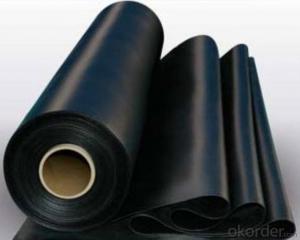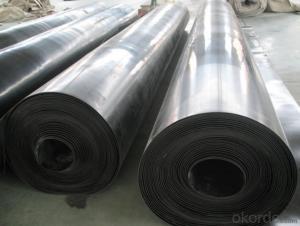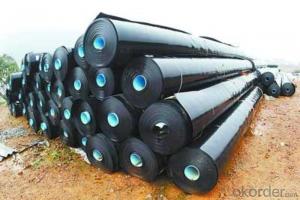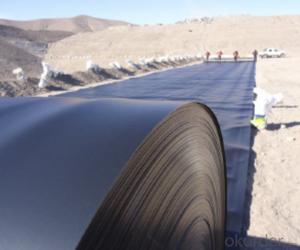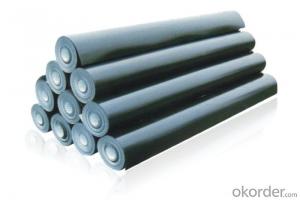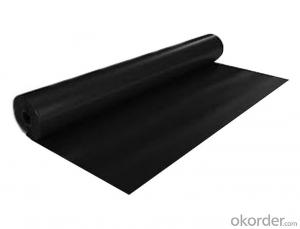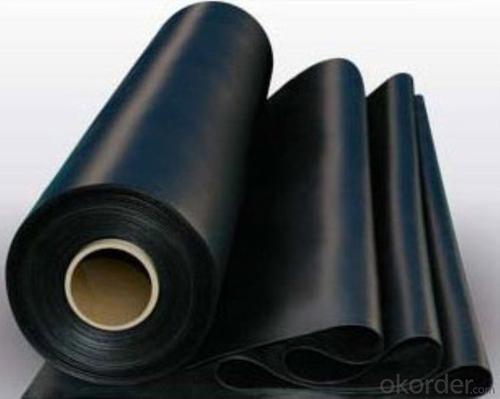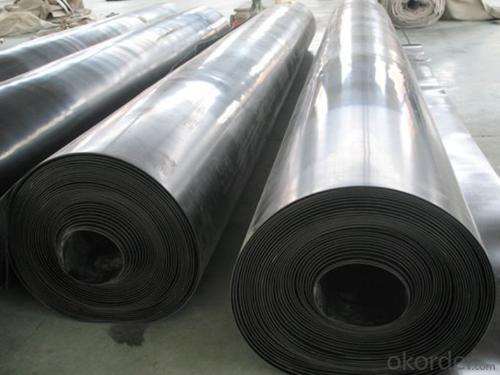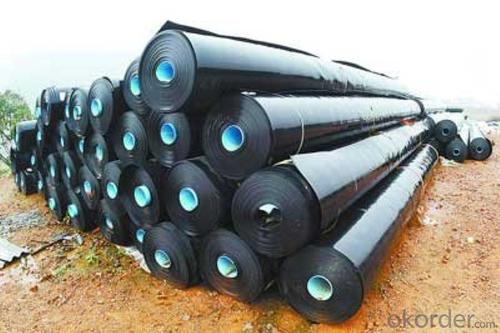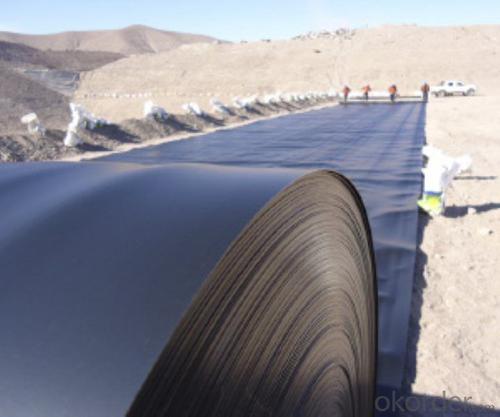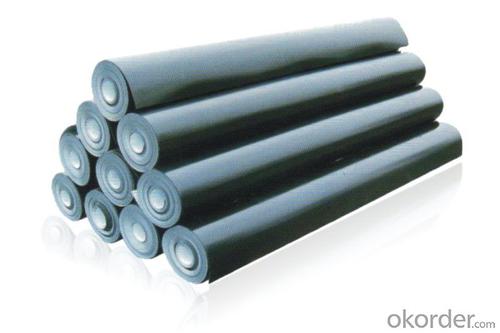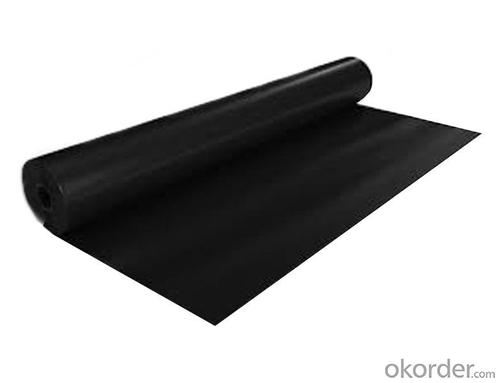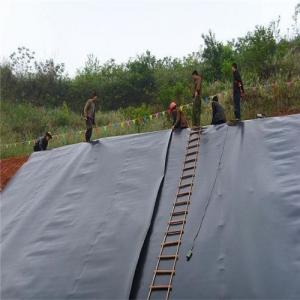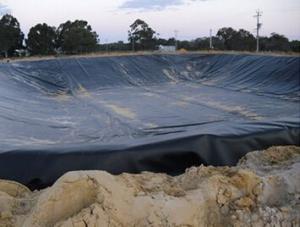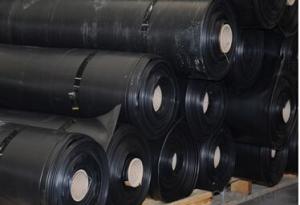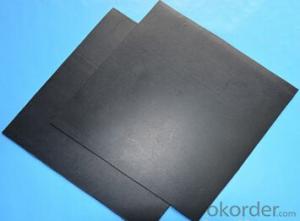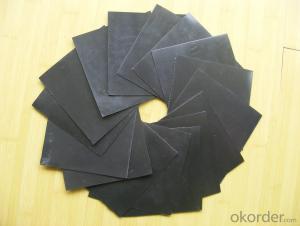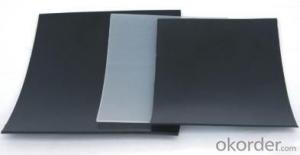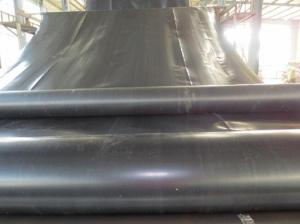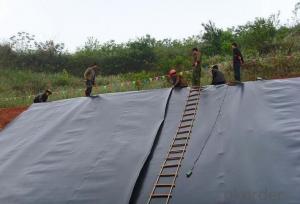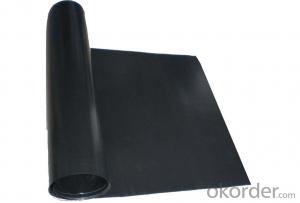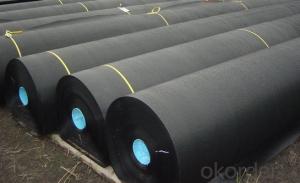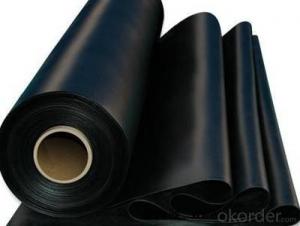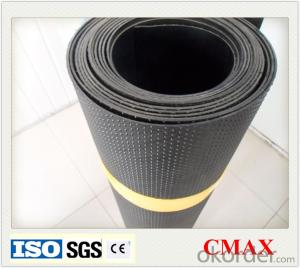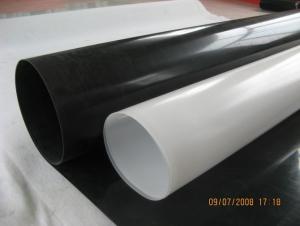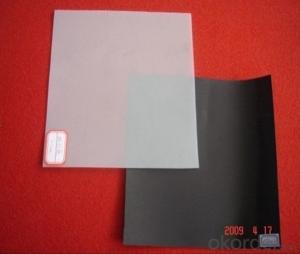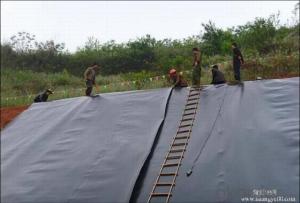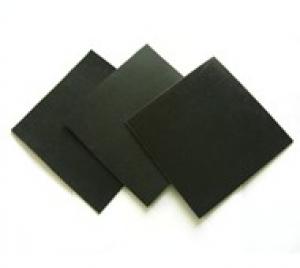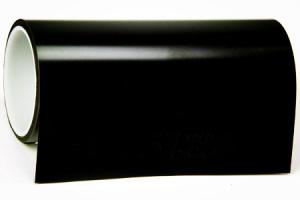Geomembrana 1.5mm of HDPE for The Constraccion
- Loading Port:
- Qingdao
- Payment Terms:
- TT OR LC
- Min Order Qty:
- 5000 m²
- Supply Capability:
- 100000 m²/month
OKorder Service Pledge
OKorder Financial Service
You Might Also Like
Geomembrana 1.5mm of HDPE for The Constraccion
Description Of Geomembrana 1.5mm of HDPE for The Constraccion
Geomembrane is a plastic Film Raincoat. Currently, the main raw materials of Waterproof Geomembrane are mainly Plastic polyvinyl chloride (PVC) and polyethylene (PE), Eva (ethylene / vinyl acetate Copolymer), also designed for Special use in applications of Tunnel (ECB Ethylene vinyl acetate Modified Asphalt mixture Geomembrane).
Main Features of Geomembrana 1.5mm of HDPE for The Constraccion
molecular structure
Polyethylene (PE) geomembrane is divided into low-density polyethylene (LDPE) geomembrane
linear low density polyethylene (HDPE) geomembrane
Applications of Geomembrana 1.5mm of HDPE for The Constraccion
1.HDPE geomembrane is applicable to environmental protection and sanitation: such as landfill, sewage treatment plant, power plant adjustive pool, industrial, hospital solid waste;
2.HDPE geomembrane is applicable to hydraulic engineering: such as seepage control, plugging, reinforcement for rivers, lakes and reservoirs and dams, drainage seepage control, vertical core wall, slope protection, etc.
3. HDPE geomembrane's applications in municipal engineering: subway, underground works of the building, planting roof, roof garden, sewage pipe seepage control;
IMages of Geomembrana 1.5mm of HDPE for The Constraccion
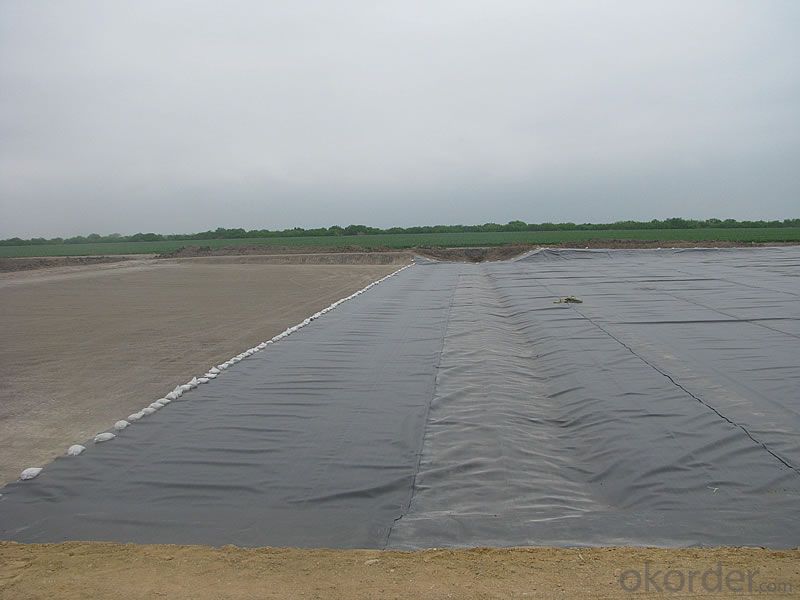
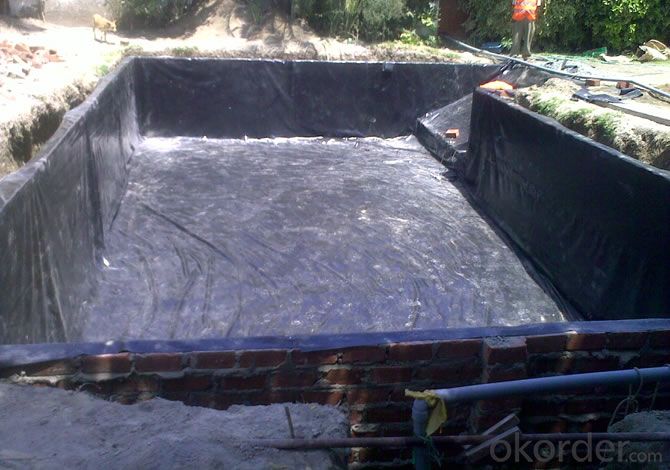
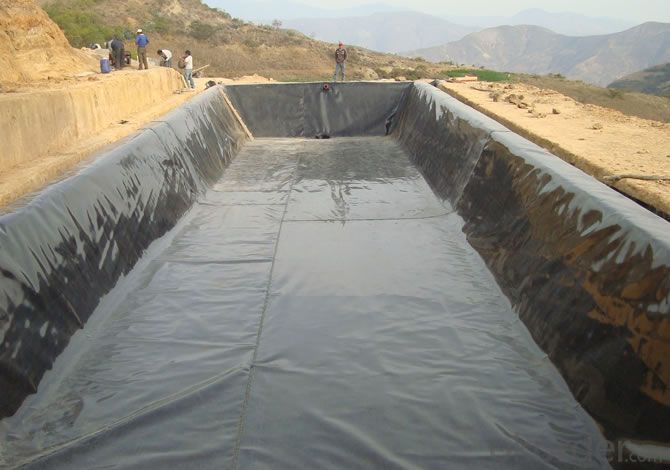
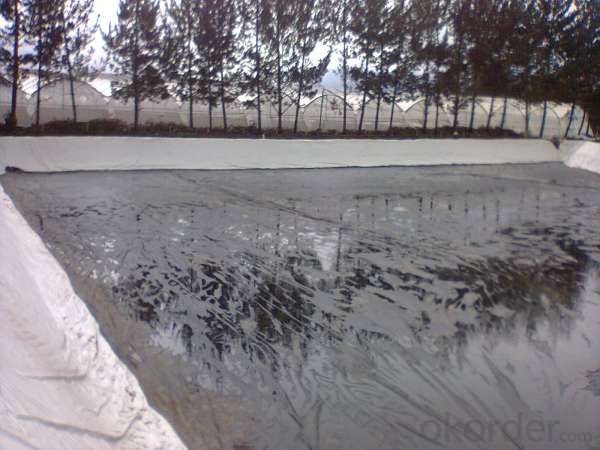
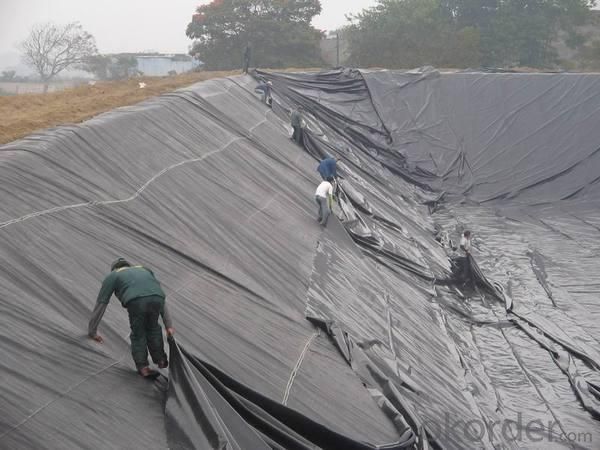
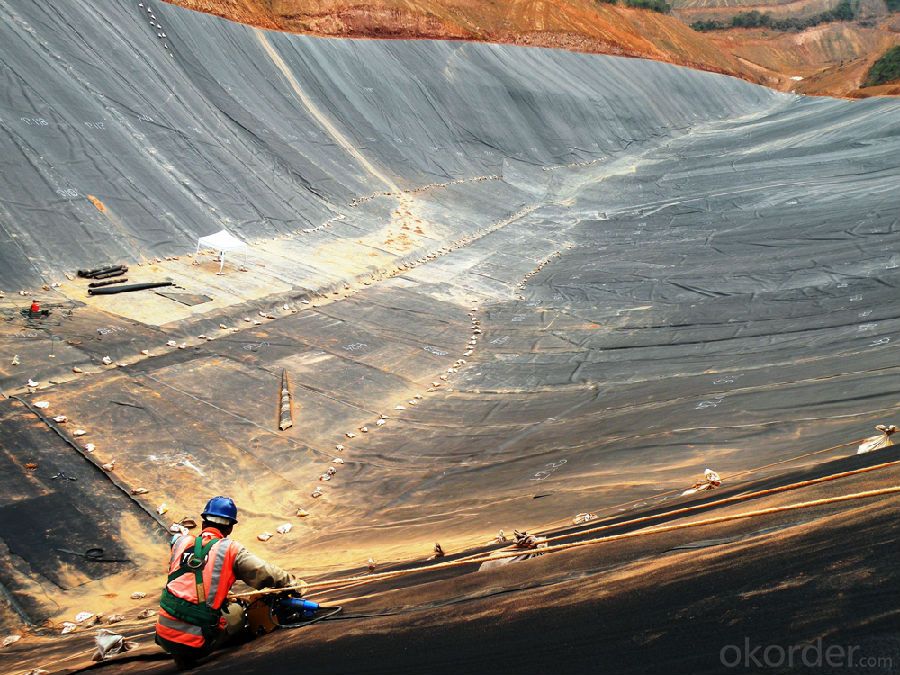
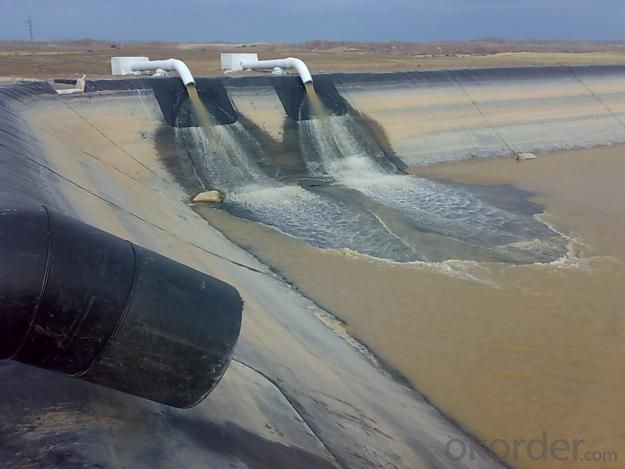
FAQ:
1. What are we supplying?
We are specialized in producing .geotextile , geocell, geogrid, geomembrane
2. How Many years experience do we have?
We have been exported to more than 15 countries in the past 10 years.
3. How long do we usually reply your request?
We always reply our customer within 12 hours.
- Q: Preparation of composite geomembrane precautions?
- 1, laying the ground to be flat, not allowed to have stones, bricks and hard objects, to avoid uneven subsidence, cracks, anti-seepage within the turf, roots have to clear. 2, composite geomembrane laying do not pull too tight, should leave a certain amount of expansion and contraction to adapt to the matrix deformation. 3, composite geomembrane construction can be embedded using embedded: cover thickness should not be less than 30cm, according to different circumstances, can also be used anchor nails fixed. 4, composite geomembrane laying in the filling, should avoid the stones, heavy objects directly hit the composite geomembrane, the best side of the construction, while laying, while covering the protective layer. 5, composite geomembrane lap should avoid the slope, preferably in the flat or embankment at the bottom. 6, composite geomembrane in the laying should avoid dragging, hard pull, to avoid sharp objects stabbed.
- Q: How to choose the stick membrane for decoration?
- Firstly, look at the design and colour. In order to identify whether the household colourful film is good or bad, you should first check whether the color is even, whether there is chromatism and bleeding. Usually a pattern is better when the pattern is more clear. In the next step, you should look at the tenderness, which is mainly for non-woven fabrics and wall coverings, etc. You have to look at both sides. Usually the quality is better if density of the surface wove is higher. Secondly, touch it and feel its toughness. Some people think that household colourful film is better when it is thicker, which is a misunderstanding. The quality is related to the quality of paper, production technique and toughness, and thickness, and not directly related to the thickness. When you identify the wallpaper by hand, you should touch it and feel and toughness, particularly for flocking wallpapers. They are most likely to feel the difference between good and bad. Usually the quality and toughness is better when it is softer. But when domestic and imported products that are made of the same material are compared, the imported ones will be relatively thick and of higher density. Third, smell it. Inferior household colourful film has bad smell. In addition, the real environmentally friendly film has no smell, but if it is made of inferior materials, it will have a pungent smell. You can smell it when coming close to it. Fourly wipe it. Wear-resisting and soiling-resisting should be tested. It is recommended that consumers draw some lines on the paper and the wipe them in the purchase process. Generally high quality colorul decoration film can easily be cleaned even if the surface is bumpy, but if it is of low quality, it is easy to be scraped or not easy to be cleaned.
- Q: How do geomembranes contribute to the prevention of slope instability in landfills?
- Geomembranes contribute to the prevention of slope instability in landfills by acting as a barrier to limit the infiltration of water and the movement of gases within the landfill. This helps to maintain the stability of the slope by reducing the potential for erosion and increasing the overall structural integrity of the landfill. Additionally, geomembranes provide a protective layer that helps to prevent the release of harmful contaminants into the surrounding environment, further minimizing the risk of slope instability.
- Q: Can geomembranes be used in underground construction?
- Yes, geomembranes can be used in underground construction. They are often used as liners to prevent seepage or leakage of fluids in tunnels, underground storage tanks, and other underground structures. Geomembranes provide an impermeable barrier and help to maintain the integrity of the construction.
- Q: Can 1.5mm geomembrane be produced by blow molding?
- Geomembrane produced by large blow molding machine is of thickness of 0.15-2.5mm and breadth of 1-9m. The geomembrane produced by small blow molding machine is of thickness of 0.05-1.0mm.
- Q: How to remove the film on the stainless steel film faced plywood?
- There are two methods to remove it completely. 1 You can heat it, dry it and tear it with a electric hair dryer. 2 you can smear it with a cloth dipped in acetic ether (a chemical solvent that specifically dissolves the protective film glue), but it should be noted that the stainless steel surface should be cleaned with water in time after the film is torn off.
- Q: Are geomembranes resistant to UV radiation?
- Yes, geomembranes are generally resistant to UV radiation. They are designed to have high UV resistance in order to withstand prolonged exposure to sunlight without significant degradation or damage.
- Q: How to pave geomembrane and what should be paid attention during construction?
- Pavement and installation of geomembrane: 1, It should be extended from the bottom to the high, do not pull too tight, should be left with more than 1.50% of width in order to prepare for local subsidence. Considering the actual situation of the project, the construction of side slope is taken from top to bottom. 2) two adjacent longitudinal joints should not be in a horizontal line, and should be staggered over 1M. 3) longtudinal joints should be apart from dam toe, bending foot more than 1.50M, and should be located in the plane. 4) back slope first and then comes with bottom. 5) when paving side slope, the direction of the film should be parallel to the maximum gradient line. Secondly, we should do a good job in the preparatory work of the construction and installation of geomembrane welding: 1 cutting and transportation: According to the records of laying base measurement , cutting large bundle number of geomembrane should be marked and recorded and then carried to construction site according to their number. Attention: during the transportion, do not pull and drag geomembrane, and try to avoid sharp objects.
- Q: How do geomembranes contribute to landfill gas recovery systems?
- Geomembranes contribute to landfill gas recovery systems by acting as a barrier that prevents the escape of harmful gases such as methane into the atmosphere. These durable synthetic liners are installed in landfills to create a containment system, allowing for the collection and extraction of landfill gas. By effectively sealing off the waste, geomembranes help to enhance the efficiency of gas recovery systems, minimizing environmental impact and promoting the sustainable utilization of landfill gas as a renewable energy source.
- Q: What is the HDPE geomembrane of rough surface?
- The rough surface HDPE geomembrane material is composed of 97.5% high-quality polyethylene, 2.5% carbon black, trace antioxidant and heat stabilizer. The rough surface is the result of a special co-extrusion process, the process is a molding production, the most important characteristic rough surface HDPE geomembrane offer is that it can increase the stability of the slope material, from Ji-light delay Gan hoot imitation dec containing wet splashing and ultimately HDPE geomembrane can carry Kongyong Rong maximize product adapted to the characteristics of the laying of a steep slope in cost savings but also improve design capabilities.
Send your message to us
Geomembrana 1.5mm of HDPE for The Constraccion
- Loading Port:
- Qingdao
- Payment Terms:
- TT OR LC
- Min Order Qty:
- 5000 m²
- Supply Capability:
- 100000 m²/month
OKorder Service Pledge
OKorder Financial Service
Similar products
Hot products
Hot Searches
Related keywords
